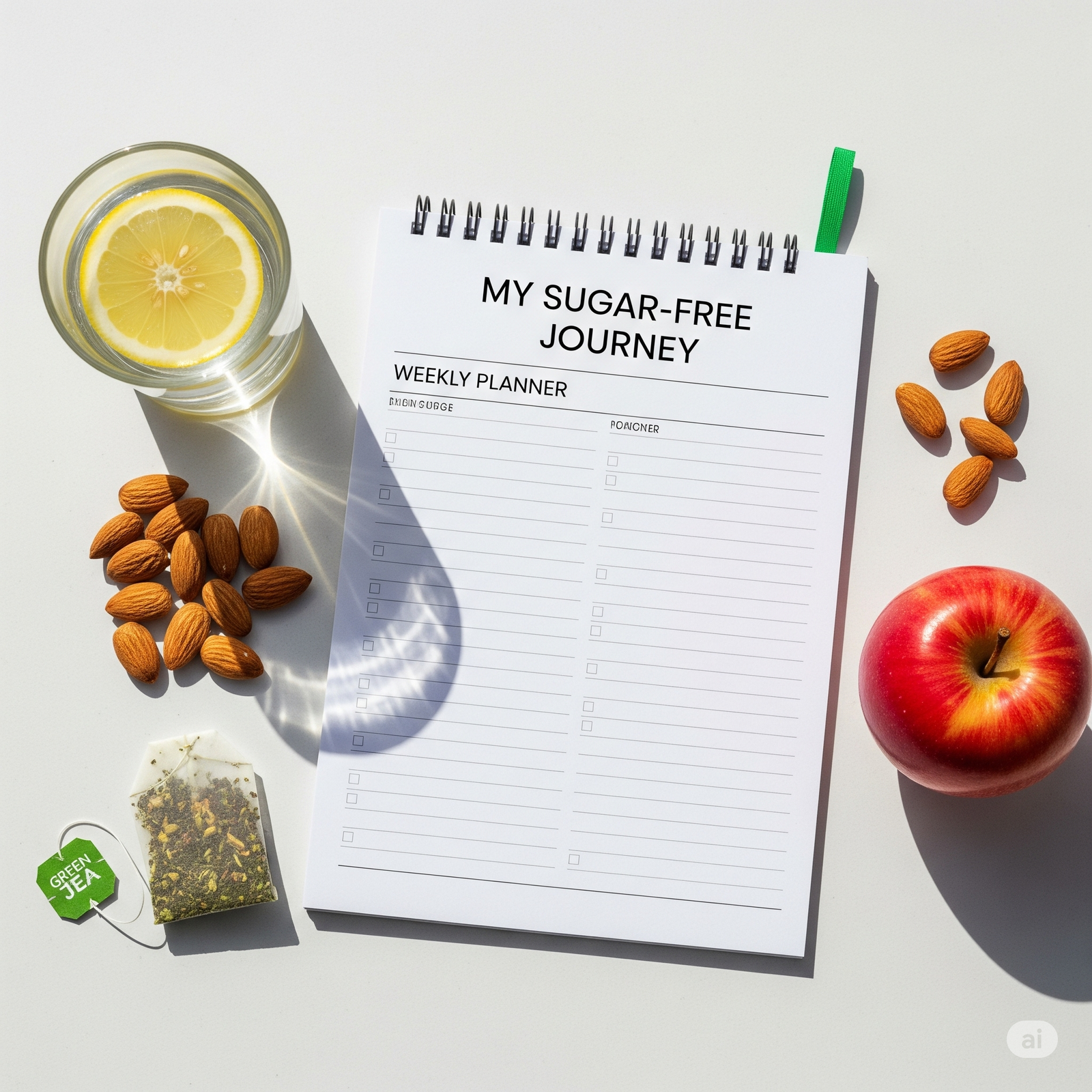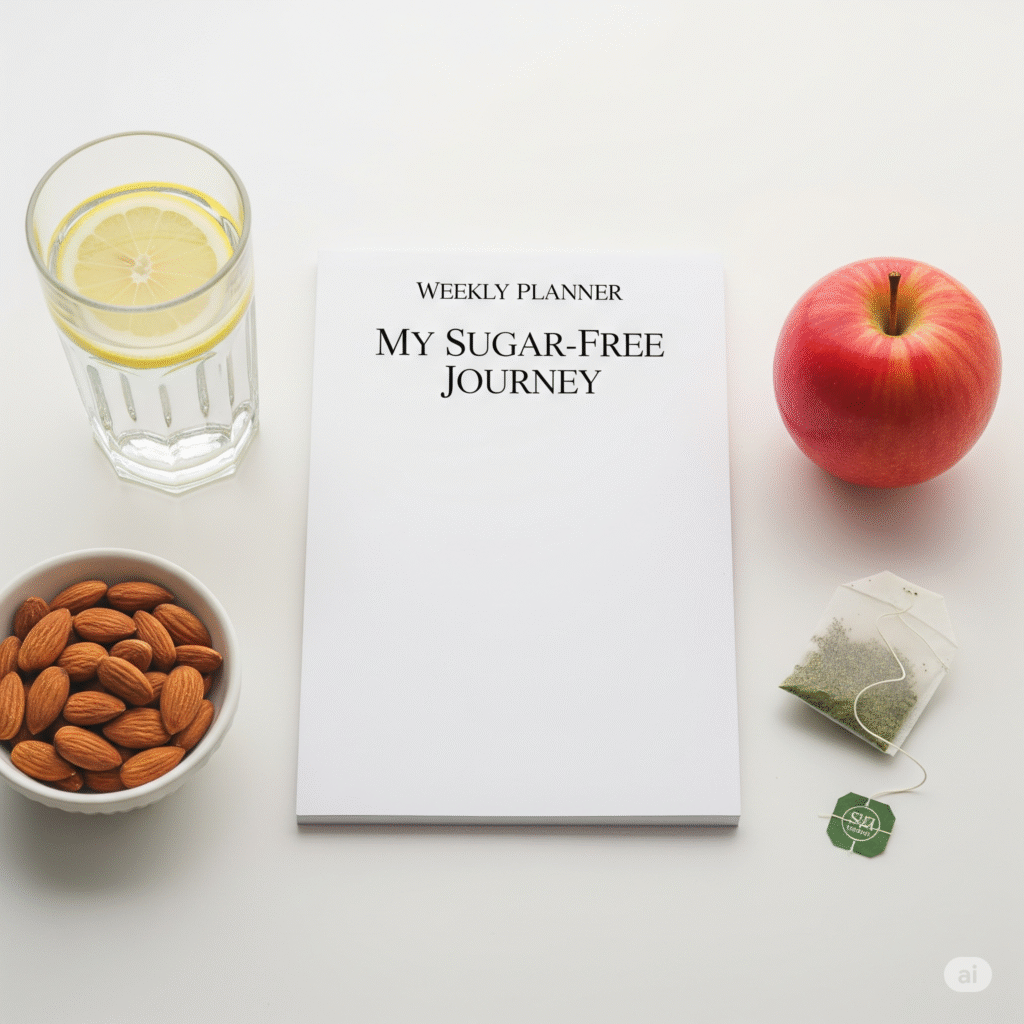Physical Address
304 North Cardinal St.
Dorchester Center, MA 02124
Physical Address
304 North Cardinal St.
Dorchester Center, MA 02124

As a neuroscientist and registered dietitian, I’ve spent years studying the intricate dance between what we eat and how our brains behave. The one question that surfaces more than any other in my practice is this: “Is sugar actually addictive?” Patients describe intense cravings, loss of control, and a cycle of guilt that feels inescapable. They’re not imagining it. The science is clear: sugar leverages the same neural pathways as many addictive substances.
This article will pull back the curtain on the science of sugar and the brain. We’ll explore the controversial “sugar vs. cocaine” debate, but more importantly, I’ll provide you with the practical, evidence-based strategies I use with my own clients to break free from the hold of sugar.
Imagine your brain has a “reward circuit.” Its primary job is to ensure you repeat behaviors essential for survival, like eating and procreating. When you do something beneficial, this circuit releases a shot of dopamine, which essentially tells your brain, “That was great! Do it again.”
When you eat a high-sugar food, you get a massive, unnatural flood of dopamine. It’s far more intense than the gentle release you’d get from eating a piece of fruit. Your brain, designed to seek pleasure, gets a powerful signal. The problem is, with repeated exposure, the brain starts to adapt.
This cycle—binge, tolerance, withdrawal, and craving—is the hallmark of addictive behavior. As cited by the National Institute on Drug Abuse, this is precisely the mechanism that addictive drugs exploit. While sugar’s effect is less intense than, say, heroin, the pathway it uses is identical.
You’ve probably seen the headline. It stems from a compelling study where rats, given the choice between intravenous cocaine and sugar water, overwhelmingly chose the sugar. This led to the explosive claim that sugar is “more addictive than cocaine.”
Here’s the scientific nuance that’s often lost:
So, is it more addictive? No. That’s a misleading oversimplification. A more accurate statement is: Sugar is a highly rewarding substance that uses the same brain circuitry as addictive drugs, and its constant availability makes it a significant challenge for modern humans.
Recognizing the science is the first step. Taking back control is the next. This isn’t about a crash diet; it’s about a strategic reset of your brain and palate.

Step 1: The 72-Hour “No Added Sugar” Reset For three days, commit to consuming zero added sugars. This means no sodas, candies, pastries, or sweetened yogurts. Read every label—you’ll be shocked where sugar hides (bread, ketchup, salad dressing). This initial period helps break the immediate cycle and reset your insulin sensitivity. Expect to feel a bit grumpy; that’s the withdrawal.
Step 2: Hydrate and Move Cravings are often mistaken for thirst or boredom. Before reaching for a sweet, drink a large glass of water and wait 10 minutes. Gentle movement, like a brisk walk, also releases endorphins that can curb cravings.
Step 3: Prioritize Protein and Fiber Protein and fiber are your secret weapons. They slow digestion and stabilize blood sugar, preventing the crashes that trigger cravings. Start your day with eggs, Greek yogurt, or a protein smoothie instead of a sugary cereal or pastry.
Step 4: Purge Your Environment You can’t eat what isn’t there. Go through your pantry, fridge, and secret stashes. Get rid of the cookies, ice cream, and sugary drinks. This is the single most important step for success. You’re removing the trigger, not just trying to resist it.
Step 5: Identify Your Triggers Are you eating sugar out of boredom, stress, or habit? For one week, keep a log. When a craving hits, note the time, your mood, and the situation. Recognizing your patterns is key. If you always crave a cookie at 3 PM when you’re stressed, you can create a new plan: a 3 PM walk or a cup of herbal tea.
Step 6: Reintroduce Natural Sugars Slowly After your initial reset, focus on whole foods. Get your sweetness from fruit. An apple contains fiber and water, which slows the absorption of its natural sugars, preventing the dramatic dopamine spike you get from a candy bar.
Step 7: Learn to Read Labels Become a sugar detective. Added sugar hides under dozens of names: high-fructose corn syrup, dextrose, sucrose, barley malt, rice syrup, and more. A simple rule from the American Heart Association: women should aim for no more than 25 grams (6 teaspoons) of added sugar per day, and men no more than 36 grams (9 teaspoons).
[IMAGE PROMPT: Close-up shot of a person’s hand holding a packaged food item, with their finger pointing directly at the “Added Sugars” line on the nutrition facts label. The background is slightly blurred, emphasizing the label. The lighting is bright and clear, conveying a sense of discovery and awareness.]
Q: How long does it take to detox from sugar? A: The most acute withdrawal symptoms, such as headaches and irritability, typically last for 2-5 days. However, retraining your palate and breaking the psychological habits can take a few weeks. Most people report a significant reduction in cravings after the first week.
Q: What are the symptoms of sugar addiction? A: Symptoms include intense cravings for sweet foods, eating more sugar than intended, feeling sluggish or fatigued after a sugar “crash,” and experiencing headaches or irritability when you try to cut back.
Q: Can you become addicted to artificial sweeteners? A: While they don’t cause the same blood sugar spike, some research suggests that hyper-sweet artificial sweeteners can still perpetuate a craving for intense sweetness, making it harder to appreciate the subtle sweetness of natural foods. It’s best to reduce all forms of intense sweeteners.
Q: What is the one thing I can do today to start? A: Eliminate all sugary drinks. Sodas, sweetened teas, sports drinks, and fancy coffee creations are the single largest source of added sugars in our diet. Swapping them for water is the most impactful first step you can take.